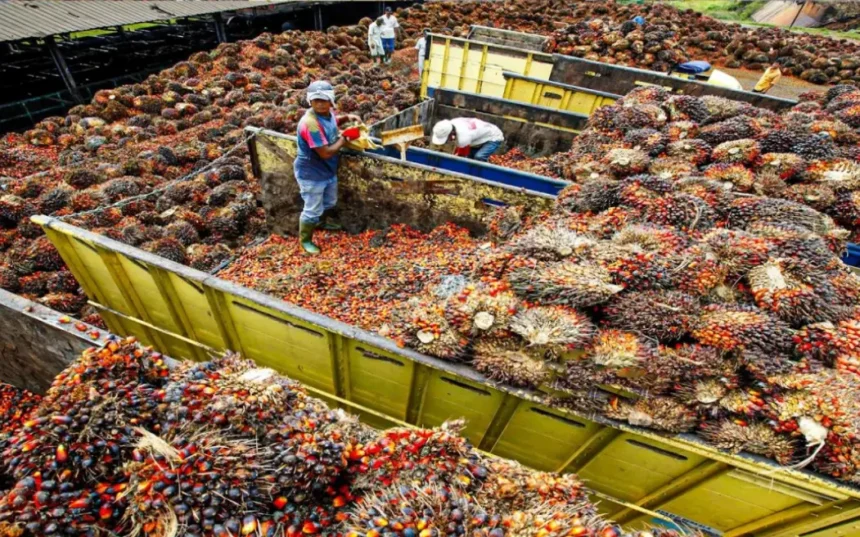Executive Summary
In the 1960s, Nigeria led the world in palm oil production, supplying over 43% of the global market. However, the country has since lost its dominant position to countries like Indonesia, Malaysia, Thailand, and Colombia. Today, Nigeria is a net importer of palm oil, despite its favorable agro-ecological conditions and historical dominance. This report explores the decline, examines comparative global success stories, and proposes actionable policy and investment strategies to revitalize the sector. Intended for policymakers, investors, researchers, and development stakeholders, it presents a clear-eyed analysis of what went wrong and what must be done to reclaim lost ground.
- Historical Overview: Nigeria’s Early Dominance and Decline
During the 1950s and early 1960s, Nigeria was the world’s largest palm oil producer, accounting for more than 43% of the global output. Palm oil, alongside cocoa, rubber, and groundnuts, constituted the backbone of Nigeria’s agrarian economy and foreign exchange earnings. The country benefited from vast natural oil palm groves, skilled traditional processors, and favorable tropical climatic conditions.
Malaysia, now a global leader, sourced its initial oil palm seedlings from Nigeria. However, the discovery of crude oil in the late 1960s and the subsequent oil boom in the 1970s diverted attention from agriculture. The result was decades of neglect, with palm oil plantations, processing mills, and research centers falling into disrepair.
Key plantations like AdaPalm in Imo State, Akwa Palms in Akwa Ibom, and Kwa Falls in Cross River were once thriving but later became moribund due to poor governance, corruption, lack of investment, and policy inconsistency. By 2022, Nigeria had fallen to the fifth position globally in palm oil production, with just 1.4 million metric tons (MT), according to the United States Department of Agriculture (USDA). In contrast, Indonesia produced 50 million MT, and Malaysia 19 million MT.
- Nigeria’s Consumption-Production Mismatch
Palm oil remains the most consumed edible oil in Nigeria, used in households, food processing, and cosmetics. Yet, domestic production has consistently lagged behind consumption. USDA data shows Nigeria consumed approximately 1.8 million MT in 2022, compared to production of 1.4 million MT, creating a shortfall met by imports.
In 2023 alone, Nigeria imported over 304,000 MT of palm oil from Malaysia, valued at more than ₦43.4 billion (approx. $95 million), as reported by the Malaysian Palm Oil Council (MPOC). Between 2013 and 2023, annual palm oil imports ranged from 300,000 to 500,000 MT. Despite attempts to increase local production, Nigeria remains Africa’s largest importer of palm oil.
According to PricewaterhouseCoopers (PwC), Nigeria spends over $600 million annually on palm oil imports. This represents a significant capital flight that could be redirected to support smallholders, modernize processing infrastructure, and stimulate rural development.
- Global Case Studies: What Nigeria Can Learn
Indonesia
Indonesia is the world’s largest palm oil producer and exporter. In 2023, it produced over 45 million MT of crude palm oil and earned $22.67 billion in export revenue (Trademlex). The palm oil sector accounts for 11% of the nation’s total exports and provides direct employment to about 3.7 million people and indirect employment to 11 million more.
Key drivers of success include:
- Nearly 15 million hectares of cultivated land
- A clear public-private sector collaboration framework
- A strong smallholder inclusion model (accounting for 40% of national output)
- Strategic investment in R&D, particularly through the Indonesian Oil Palm Research Institute
Malaysia
Malaysia is the second-largest palm oil exporter, contributing 27% of the world’s palm oil exports and 11% of global fats and oils. It has nearly 6 million hectares under cultivation. The palm oil sector contributes 4% to GDP and employs nearly 1 million people.
Malaysia’s success is linked to:
- Institutions like FELDA and FELCRA that empower smallholders
- Robust government subsidies, tax breaks, and loan guarantees for agribusinesses
- Efficient and technologically advanced milling systems
Thailand
Thailand ranks third globally, producing around 3.3 million MT annually. Over 400,000 smallholder households cultivate oil palm across 6.44 million rai (~1 million hectares). Government support comes through:
- Certification schemes (e.g., Roundtable on Sustainable Palm Oil – RSPO)
- Formation of farmer cooperatives
- Technical training and low-cost credit
Colombia
Colombia is Latin America’s top producer and the world’s fourth-largest with approximately 1.3 million MT in 2022. The sector contributes about $5 billion to GDP and employs around 150,000 people.
Notable institutional strengths include:
- FEDEPALMA (National Federation of Oil Palm Growers)
- CENIPALM (Palm Oil Research Center)
- Public-private partnerships and inclusive value chains
According to the International Labour Organisation (ILO), the sector provides 35,000–40,000 direct jobs and accounts for 7% of Colombia’s agricultural GDP.
- Nigeria’s Challenges: Voices from the Ground
Despite its historical lead and domestic demand, Nigeria faces persistent systemic challenges:
- Outdated Production Methods: Many smallholders still use manual or semi-manual extraction techniques. Yields remain as low as 1.5–2.0 MT per hectare, compared to Malaysia’s 4–5 MT.
- Insecurity and Militancy: Farmers in Cross River, Imo, and Akwa Ibom face threats from armed groups, theft, and extortion. Plantation workers report kidnappings and forced levies.
- Infrastructure Deficits: Poor road networks, lack of storage, and dilapidated processing facilities hinder scale and efficiency.
- Inadequate Financing: Smallholder farmers lack access to affordable credit, modern equipment, and agricultural extension services.
- Climate Change: Fluctuating rainfall patterns and temperature extremes reduce yields. Farmers lack drought-resistant seedlings.
- Policy Inconsistency: Government programs are often politicized, short-lived, or poorly executed.
- Corruption and Mismanagement: Numerous plantation revival initiatives have been derailed by misappropriation and poor leadership.
- Multiple Taxation: Local processors report high taxes, haulage fees, and regulatory extortion.
Field interviews confirm these issues. Mrs. Nse Bassey, a small-scale processor in Eket, decried the high cost of diesel, lack of seedlings, and multiple levies. Mr. Hubert Eze reminisced about AdaPalm’s contributions in the 1980s, noting that the plantation has since been vandalized. Mr. Bassey Achibong, a farmer in Cross River, described being harassed by militant groups demanding payment before harvest. Madam Mary Edet noted the labor-intensive nature of traditional processing and the high cost of hiring millers.
- Policy Recommendations and Strategic Actions
To reposition Nigeria in the global palm oil value chain, a comprehensive strategy is required:
- Develop a National Palm Oil Development Blueprint
- Establish a multi-tier strategy with short-, medium-, and long-term goals
- Coordinate federal and state government agencies
- Map existing plantations and develop replanting schedules
- Revive and Modernize Government-Owned Plantations
- Partner with private firms under PPP arrangements
- Audit and rehabilitate facilities like AdaPalm, Akwa Palms, and Kwa Falls
- Support Smallholders and Women Farmers
- Provide subsidized inputs (seedlings, fertilizers, machines)
- Expand access to low-interest loans through the Bank of Agriculture and microfinance banks
- Promote cooperatives for aggregation and training
- Improve Infrastructure and Logistics
- Construct rural access roads and farm-to-market transport networks
- Build centralized warehouses and storage systems to reduce post-harvest losses
- Secure Plantation Regions
- Establish rural security task forces in collaboration with local communities
- Create dispute resolution frameworks for land conflicts
- Strengthen Research and Extension Services
- Expand funding for universities and research institutions focused on oil palm
- Introduce digital tools for extension agents and farmers
- Create Market Incentives and Regulate Imports
- Phase-in import tariffs and create palm oil reserves
- Offer tax incentives to local refiners and exporters
- Promote Sustainable Production Practices
- Encourage RSPO certification to access premium markets
- Build climate-resilient supply chains
- Conclusion: Toward a Palm Oil Renaissance
Nigeria’s fall from global palm oil leader to net importer is a sobering tale of missed opportunities and policy neglect. Yet, the path to revival is clear. With over 11 million hectares of arable land suitable for oil palm cultivation and a large domestic market, Nigeria has the potential to re-emerge as a palm oil powerhouse.
Reviving the sector requires visionary leadership, coherent policies, and committed partnerships. The global palm oil market, valued at over $60 billion, offers Nigeria an opportunity to diversify its economy, reduce import dependence, create jobs, and enhance rural livelihoods.
A comprehensive national strategy—rooted in inclusivity, sustainability, and investment—will not only restore Nigeria’s position but also set the stage for a resilient, agriculture-driven economy.
Sources Cited:
- United States Department of Agriculture (USDA)
- UNDP Agricultural Development Reports
- PwC Nigeria Palm Oil Market Analysis
- Malaysian Palm Oil Council (MPOC)
- International Labour Organisation (ILO)
- Trademlex Global Trade Reports
- EOS Data Analytics (Malaysia)
- Statista (Thailand, Global Edible Oils)
- CENIPALM (Colombia)
- FEDEPALMA (Colombia)
- Crowe Malaysia and Indonesian Ministry of Agriculture






